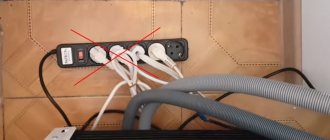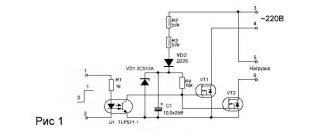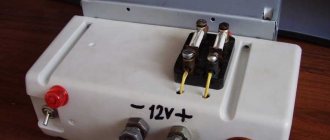How the malfunction manifests itself
If you notice that the water does not heat up during washing, you should not immediately disassemble the machine. You need to make sure that the spiral is not working, and then determine the reasons for this phenomenon.
First, you should understand that after rinsing is completed, the laundry should not be warm. To save electrical energy, cold water is used, so it is impossible to determine from the temperature of wet laundry whether the heating element is working or not.
The check is performed in a different way: 20 minutes after the start of washing, the palm is placed on the glass of the loading hatch. If it is warm, the heating element is working. A cold surface indicates that the water is not heating up. In this case, you will have to change the heating element.
Many owners of household appliances are interested in what causes the heater to fail. Failure occurs in the following cases:
- Failure of the heating element due to scale. The reason for its formation is hard water, which contains high concentrations of magnesium and potassium salts. When the heating element is turned on, the water heats up and substances settle on the surface of the spiral. After some time, the coating becomes harder, turns to stone, and the entire surface of the part becomes covered with a crust. This leads to a disruption in heat exchange, and the heating element burns out.
- The coil may burn out due to a voltage drop.
When the heater fails, it is replaced, but you need to start with preparatory measures.
Causes of heating element failure
Power surges in the network
During worsening weather conditions or breakdowns, voltage surges may occur on power lines. An increase in voltage from 220 to 380V can cause automation and spare parts to burn out.
Poor water quality
Hard water with a high calcium content creates a deposit on the heating element during operation. Such deposits impair the efficiency of the element and provoke subsequent breakdown of the heating coil.
Signs of a broken heating element
- A sharp deterioration in the quality of washing. Selecting a mode with a higher temperature and adding other detergents do not help
- Reducing energy consumption, on the one hand, is certainly a pleasant thing, but it can mean a breakdown. Heating water with a washing machine takes up to 80 percent of consumption.
- Spontaneous shutdown of equipment when heating water, activation of the protective sensor and the appearance of an error message on the display. In this situation, the equipment is disconnected from the network and cannot be used until it is repaired.
Repair: what you need
Phillips and flathead screwdrivers of suitable diameter. Lubricant, WD-40 will also work. Tester. Ratchet with socket head 8.
Before you decide to start replacing the spiral, we advise you to check its serviceability; the problem may be a breakdown of the electrical circuit itself. How to check the heating element of a washing machine? A standard tester is sufficient for this. The check is carried out according to three main parameters
Spiral rupture is the most common cause of failure. The part is called by connecting the tester wires to the terminals. If the needle of the measuring device sharply deviates to 0 in resistance mode, this means that the spiral has burned out.
Hole in the heating element body. Quite a dangerous cause of breakdown for machines without grounding. The current will fall directly on the body and you can get a noticeable electric shock. Checking for breakdown of the spiral is checked after briefly heating the element. Deviations of the arrow of the tester's measuring scale indicate the presence of a breakdown.
Where and at what price can I buy a new one?
You can buy a new part in an online store, an LG service center or from a supplier of spare parts for equipment in your city. The easiest way to select the right part is to show it to the seller or name the marking. You can also determine the standard element from catalogs for washing machine models.
When purchasing a heater online, you need to consider the following parameters:
- seat dimensions;
- presence of a collar, seals, holes for the sensor;
- configuration of the working part of the heating element (shape, length and width);
- power.
LG washing machines are equipped with heating elements with a power of 1.1 to 3.2 kW and a length of 173-240 mm.
If a strictly similar part is not supplied, you can select a heater with similar characteristics. The permissible discrepancy in length is -1 cm, and in power - ±200 W. The new element must have the same shape as the previous one: straight or curved.
Some models of heating elements have a protective coating, which does not affect its configuration and interchangeability, but increases wear resistance and service life. The cost of the heater ranges from 400 to 1500 rubles. The best manufacturers of tubular elements for LG washing machines are IRCA and Thermowatt.
Where is the heating element located?
Understanding where the heating element is located in an LG washing machine, it is worth saying that the manufacturer has provided for a simple location of the heater at the bottom - the machine under the tank. To get to this place to check or replace an element, you just need to get rid of the back panel.
In ElG models, even a belt does not interfere with repairs, since direct drive machines do not have one.
Attention! Don't be afraid to confuse the heating element with something else. Despite the fact that the housing itself is recessed inside the housing, the shank with contacts sticks out. As soon as you remove the cover, the part you are looking for will be in front of your eyes.
If finding a heater is not difficult, then in the process of dismantling and installation work there will be difficulties. We’ll talk further about how to avoid them so that replacing the heating element in an LG washing machine is successful.
Circuit break
The electrical wiring of a washing machine is subject to wear and tear; in addition, depending on the design of the equipment itself, the wires may be rubbed in by the drum, which will lead to their rupture or damage; in both cases, the ten will fail and without reaching it it will be impossible to determine the real cause of the malfunction. Naturally, a damaged wire must be repaired or even replaced; in essence, such work does not take much time for a technician; it will take much longer to disassemble the car to get to the ten.
With your own hands
Replacing the heater in a washing machine
The washing machine stopped heating the water when washing Electrolux dishwasher connection. The malfunction in 99% of cases lies in the failure of the heating element - the heating element. The cause of the breakdown is deposits of scale, dirt, etc. on the heating element, which causes heat transfer to deteriorate and the heating element coil to burn out. So, replacing the heater in the LG washing machine, as they say, the eyes are afraid, but the hands do it.
The heating element in an automatic washing machine must always be in water during operation, therefore it is installed at the back of the washing machine tank. To replace it you need:
Make sure that the washing machine is disconnected from the electrical network. Then remove the back cover of the machine by unscrewing 4 or more screws. The heating element is observed under the drum pulley (or under the electric motor in LG machines with direct drive).
For ease of operation, you can remove the drive belt. Next, remove three wires from the heating element terminals: two supply and one ground, plus a connector from the temperature sensor, if it is installed on the heating element.
Loosen the nut on the central screw of the heating element by 5-6 turns and push the screw inward to this distance.
Using two flat screwdrivers, pry up and remove the heating element. This operation will require little effort, because... the sealing rubber of the heating element can be strongly compressed when installing the heating element and the resulting rim will not allow the heating element to be immediately removed (typical of SMA Atlant). The layer of scale and other deposits that forms over time will make it difficult to replace the heating element in the washing machine. Remove the heating element from the washing machine body carefully so as not to damage the tank. Through the hole of the removed heating element, we remove the remaining scale, dirt, etc.
It is better to install a heating element from the same company as the one that was removed; in extreme cases, by comparing the sizes of the sealing rubber, we make sure that they are the same.
We install the new heating element in the reverse order - the heating element is tightly inserted into the tank, without missing the guide bracket inside the tank, and the nut of the central screw is tightened. You should not tighten the nut too hard; just tighten it until a slight resistance to clamping appears.
Place the belt on the electric motor and the drum pulley, turning the drum to make sure that the belt goes in the center of the pulley and the drum does not rub the installed heater (if you missed the guide when replacing the heating element).
Next, we connect the electrical wires and check everything again. We start the washing machine to check that the water is heating and there are no leaks. Please note that in some washing machines the heating is turned on only a few minutes after starting the washing program. In domestic conditions, it is convenient to control the activation of the heating element using an electric meter.
Close the back cover and put the car in place.
The process of replacing the heating element in front-facing washing machines is similar to that described above, only to access it you will have to disassemble the entire front part of the machine body.
Replacing heating element in a washing machine. the process of which is described above is not a guide to action - it is better to trust the repair of washing machines to specialists! In the next article we will tell you how to change the bearing in a washing machine.
Washing machine pump repair can be found here
How to remove it from the washing machine?
To remove the heating element, you will need the following set of tools:
- crosshead screwdriver;
- flat screwdriver;
- wrench 8;
- lubricant - it will come in handy if the bolts are very rusty, the best option is VD-40;
- multimeter
You should not delay repairing the heating element. A faulty part very often leads to damage to the control board. At the same time, the electronic module costs 3 times more than an electric heater.
To remove the heating element, proceed as follows:
- Disconnect the device from the network.
- Drain the remaining water in the drum. You can use an emergency hose to do this.
- Turn off the water supply tap.
- Disconnect the inlet hose. The drain hose is removed from the sewer drain.
- Unscrew the bolts holding the back wall, remove it and set it aside.
- They find a heating element. If inspecting the part is problematic because of the belt, it must be removed.
- Assess the tightness of the contacts to the terminals of the heating element. If one of them has come off, it must be returned to its place, and then the functionality of the equipment must be checked. If there is no heating, the process of removing the part continues.
- Unscrew the main nut, which is located in the center. Remove the temperature sensor.
- Press the bolt inward to depressurize the seal.
- Using light rocking, remove the heating element from the socket.
When removing the heating element from its seat, you must act carefully so as not to damage it. If force is applied to a burnt-out area, the tube may break off
Getting the rest of it will be problematic.
Replacing the heating element of an LG washing machine
- Remove the back panel. To do this, unscrew the screws, pull the cover up and release it from the lower grooves.
- You immediately get access to the heating element. Take a photo of the wire connections. By the way, only at this stage will it be clear whether you need a new part with or without a sensor (Fig. 2-a). For reference: if the heating element for an LG washing machine is not equipped with a temperature sensor, then the sensor will be installed to the left of it (Fig. 2-b). A mounting hole is provided for it, which is closed in the absence of a separate sensor. How to change the heating element in an LG washing machine?
- Visually, heating elements with and without a temperature sensor are easy to distinguish. Attention! Do not try to install a heater with a sensor if your LG model has a heating element without a sensor and vice versa!
- Next, remove all wires. In order to remove the ground wire, you must first unscrew the first nut from the central mount of the heating element (Fig. 3).
How to change the heating element in an LG washing machine? - Then unscrew (not completely!) the second nut, press the threaded rod inward (Fig. 4) and pull out the heating element. Just pull it towards yourself, if necessary, make a lever out of a screwdriver, trying not to damage the body of the machine.
How to change the heating element in an LG washing machine? - Install a new heating element instead of the old one (Fig. 5), trying to get into the mounting grooves. The rubber band must be treated with detergent. To check the correct fastening, rotate the drum. If there is no grinding noise, the heating element for the LG washing machine is suitable and is in its place, because it was correctly selected by ALM-zapchasti.
How to change the heating element in an LG washing machine? - Connect the wires, the temperature sensor terminal (Fig. 6) and pour water directly into the tank to make sure there are no leaks.
If there is no leak, then you can install the back panel and run a test wash to make sure that the water is also heated. If the water is heated, then the heating element is installed correctly. If not, you need to check the contact tightness again and, if necessary, tighten the terminals.
Before removing the heating element from the LG washing machine, you will need to unscrew the top cover of the machine. If you do not do this, you will not be able to remove the back wall. Usually there is no difficulty in removing the cover, but if something does not work out, consult the user manual.
Now do this:
- Remove the fasteners that hold the back of the washer body in place.
- Next, your task is to fix the location of the wiring on the heater contacts. This will help you later install a new heating element without damaging it (if you mix up the wires, both the new part and the control unit may burn out).
- Now you can safely disconnect the wires - from the heating element and from the temperature sensor located in the heater structure.
- Before you change the heating element yourself, you need to check it with a tester. The verification process is described in detail in the article “How to check the heating element of a washing machine.”
- Once you are sure that the element needs to be changed, proceed to action. You have already disconnected the heating element connection, which means the problem is with the nut holding the heater. The nut is located in the center of the shank. Here you will need a head: place it on the nut and unscrew it. Lightly tap the ratchet handle on the bolt - it should fall inward.
- Now, taking a thin screwdriver, pry up the heater seal.
- Grab the contacts and pull with force until you can pull out the heating element. Try to remove the part carefully without breaking it into pieces.
- After inspection, put the old heating element aside and take care of its mounting hole: there may be debris, dirt, and scale in it. All this needs to be cleaned up.
Don't rush to hide the tester! Check the part you just purchased to avoid installing a faulty part.
Now you know how to get the heating element and easily replace it with a new one.
Installation
The heating element is installed in an LG washing machine as follows:
- Take a new TEN.
- Lubricate the seal with WD-40 or another type of lubricant.
- Install the part into the groove.
- If the heater goes in and sits tightly, you can tighten the fasteners and hook the wiring into place (remember that you took a photo!).
At this stage, replacing the heating element in the LG washing machine can be considered successfully completed. All you have to do is run a test wash to make sure the newly installed part is working properly.
Turn on the high-temperature mode and 15-20 minutes after starting the program, touch the glass of the hatch - if it is not cold, the heating element heats up.
This video will help you clearly understand how to remove the heating element from an LG washing machine:
And it doesn’t matter what kind of heating element is in the LG washing machine - if you don’t follow the rules of caring for the machine, it will burn out. Hard water and scale slowly but surely make parts unusable.
Install a filter and use softening agents, then your machine will last longer.
Prevention of breakdowns
Maintenance of the heating element is carried out in such a way that scale does not form on it. Most often, the water entering the tap is too hard; you need to think about how to fix this and soften it. You can install special filters that will make the liquid normal for washing. If the water hardness is high, then it is necessary to avoid washing above 60 degrees and add a special powder.
If scale has already formed, you can clean the heating element with citric acid.
To do this, you need to pour it into the powder compartment and turn on the washing mode at 60 degrees without clothes. You can also do it at 90, if suddenly it seems that there is a large amount of scale. After this, you will need to clean the drum and heating element.
Such methods can prevent scale if the procedure is performed at least once every six months. To prevent its formation, you need to wash it in a mode that is no more than 40 degrees. In order to prevent other damage, you need to take a break between washes for about two hours.
This is necessary so that the LG SMA rests and does not overload itself. The formation of fungus must also be avoided. If even a small mold is suddenly noticed, you need to immediately disinfect it. It is important to remember that you only need to use high-quality powder for washing. After all, cheap household chemicals lead to the accumulation of salts on parts. If all preventive measures are followed, the washing machine will last a long time.
Description and principle of operation of the heating element
The heating element is an electric heater responsible for heating cold water supplied from the central water supply system to the washing machine.
Structurally, it consists of a W- or V-shaped tubular part, inside of which there is a conductor element with a high level of resistance that can withstand heating to record high operating temperatures.
A multimeter will help you carry out a correct check of the heating element. Using this measuring device, you can “ring” (test) the heating element at home and determine whether it is working or not.
The heating coil is surrounded by a special dielectric insulator with a high thermal conductivity. It correctly absorbs the heat emanating from the heating element and transfers it to the steel outer shell.
The working spiral itself is soldered with its outgoing ends to the contacts, which receive power during operation. Nearby there is a thermal unit that measures the level of water heating in the washing tank.
When activated through the control unit of any of the processing modes, a command signal is sent to the heating element.
The element begins to warm up intensively and, releasing the generated heat, brings the temperature of the water in the washing drum to the required temperature specified by the user.
Progressive models have a special hole in their design for a temperature sensor (in the figure the arrow points to it). It vigilantly monitors the level of water heating in the drum and promptly turns off the working element, allowing you to rationally and economically consume electrical energy
As soon as the water reaches the required temperature, the sensor records this and transfers the data to the control unit. The system reacts to the information received and automatically turns off the device, stopping water heating.










